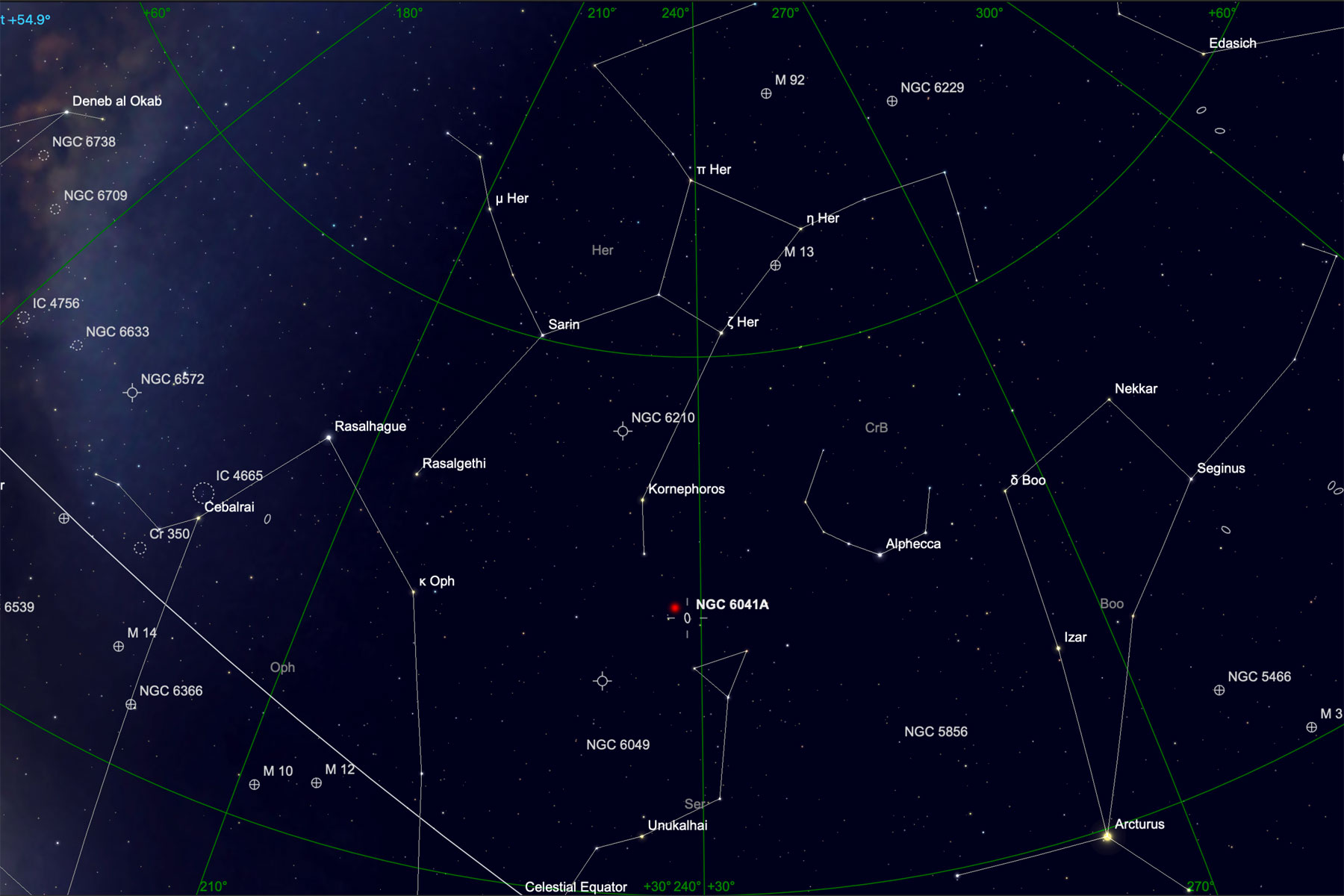
Introduction | Map | My Own Photos | My Own Observations | References
On this page I collect my observations of the galaxy cluster Abell 2151 in the constellation Hercules, called Hercules Cluster (or Hercules Galaxy Cluster), with NGC 6041 as its brightest galaxy (elliptical galaxy).
The galaxy cluster Abell 2151 in the constellation Hercules, called Hercules Cluster with NGC 6041 as its brightest galaxy is located at a distance of about 500 million light years and the galaxies are rather small in the eVscope.
Wikipedia: The Hercules Cluster (Abell 2151) is a cluster of about 200 galaxies some 500 million light-years distant in the constellation Hercules. It is rich in spiral galaxies and shows many interacting galaxies. The cluster is part of the larger Hercules Supercluster, which is itself part of the much larger Great Wall super-structure. The cluster's brightest member is the giant elliptical galaxy NGC 6041. The galaxy cluster includes Arp 71 and Arp 272 (added by me).
Arp 272: NGC 6050 and IC 1179; Arp 71: NGC 6045
According to the English Wikipedia, the cluster contains more than 300 galaxies (according to the German Wikipedia more than 100).
I had one of my photos of Abell 2151 evaluated by nova.astrometry.net. The following galaxies were found (as far as I was able to decipher the labels...):
NGC 6207
Size: 1.3' x 1.1' (Wikipedia)
Distance: 473 mio. light years (Wikipedia)
Rating: ---
The galaxy cluster Abell 2151 (Hercules Cluster) in the constellation Hercules with NGC 6041 as its brightest galaxy (overview) (Image Courtesy of SkySafari Astronomy, www.simulationcurriculum.com)
The galaxy cluster Abell 2151 (Hercules Cluster) in the constellation Hercules with NGC 6041 as its brightest galaxy (closer look) (Image Courtesy of SkySafari Astronomy, www.simulationcurriculum.com)
The galaxy cluster Abell 2151 (Hercules Cluster) in the constellation Hercules with NGC 6041 as its brightest galaxy (closer look, its extension corresponds approximately to a photo presented in Spektrum der Wissenschaft) (Image Courtesy of SkySafari Astronomy, www.simulationcurriculum.com)